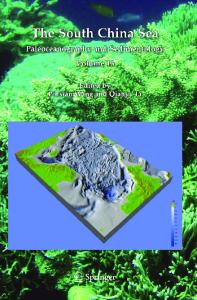Oyster copper levels in the northern South China Sea from 1989 to 2015: spatiotemporal trend detection and human health
- PDF / 1,946,587 Bytes
- 11 Pages / 595.276 x 790.866 pts Page_size
- 57 Downloads / 313 Views
ENVIRONMENTAL TOXICOLOGY AND BIOGEOCHEMISTRY OF ECOSYSTEMS
Oyster copper levels in the northern South China Sea from 1989 to 2015: spatiotemporal trend detection and human health implications Lifei Wang 1,2
&
Xuefeng Wang 1,3
&
Haigang Chen 4 & Zenghuan Wang 4 & Xiaoping Jia 4
Received: 5 February 2020 / Accepted: 28 April 2020 # Springer-Verlag GmbH Germany, part of Springer Nature 2020
Abstract Coastal heavy metal pollution has become an important topic for seafood safety and marine environmental protection. Unlike toxic heavy metals such as cadmium or chromium, copper is essential for oysters’ growth but can inhibit their immune response to exotic stress when going above normal levels. Oysters with high copper levels can easily accumulate and transfer abnormal amounts of copper to upper trophic levels, and generate health risks for humans. This study investigated the spatiotemporal variability and health risk of copper levels in cultured oysters (Crassostrea rivularis) sampled from 23 harbors, bays, or estuaries along the northern South China Sea during 1989–2015. Overall, oyster copper concentrations in the study area ranged from 0.9 to 1897.0 μg/g wet weight with a mean of 210.0 (± 143.6) μg/g and a median of 89.3 μg/g. Although oyster copper levels in the southern China provinces of Guangdong, Guangxi, and Hainan showed an overall decrease during 1989–2015, they stayed relatively low since 1996 and increased slightly after 2010. Oyster copper levels in Guangdong were significantly higher than in Hainan and Guangxi. In Guangdong, oyster copper levels were highest in the Pearl River Estuary, followed by west Guangdong and east Guangdong. The health risk of copper exposure through oyster consumption increased in 2011–2015 compared with in 2006–2010. It is recommended that the human daily intake of cultured oysters in the study area should be reduced by half to minimize copper exposure. This study suggested that copper is one of the most important heavy metal contaminants in coastal and estuarine ecosystems of the northern South China Sea. Keywords Environmental protection . Health risk assessment . Heavy metal contamination . Oyster copper concentration . Seafood safety . Spatiotemporal distributions
Introduction Editorial Responsibility: Lotfi Aleya * Xuefeng Wang [email protected] 1
College of Fisheries, Guangdong Ocean University, Zhanjiang 524088, Guangdong, China
2
Department of Biological Sciences, University of Toronto Scarborough, Toronto, Ontario M1C 1A4, Canada
3
Southern Marine Science and Engineering Guangdong Laboratory, Zhanjiang 524025, Guangdong, China
4
Key Laboratory of Fishery Ecology and Environment, South China Sea Fisheries Research Institute, Chinese Academy of Fishery Sciences, Guangzhou 510300, Guangdong, China
Marine ecosystems nowadays are strongly influenced by anthropogenic or natural disturbances and various types of pollution, and coastal and estuarine environments are particularly vulnerable to such disturbances or pollution (Material 2017). Coastal and estuarine
Data Loading...











